From Tumor Cures to Cancer Prayers: Ishikiri Shrine, a Spiritual Power Spot in Eastern Osaka
Ishikiri Tsurugiya Shrine, commonly known as Ishikiri Shrine, is located at the foot of Mount Ikoma in Higashi-Osaka, eastern Osaka Prefecture. It has long been cherished as the “God of Tumors” — or Denbo no Kami — by locals.
Over time, this belief has evolved. Today, the shrine is widely visited by those praying for recovery from serious illnesses, especially cancer. Though rooted in Kansai culture, its reputation has spread nationwide.
The street leading to the shrine is also a unique attraction in itself. Known as the Ishikiri shopping street, it features fortune-telling shops, herbal medicine stores, and various unusual merchants, creating a distinct spiritual and nostalgic atmosphere.
In this article, we’ll explore the origins and blessings of Ishikiri Shrine, and learn how its one-of-a-kind approach street came to be.
Origins and Blessings of Ishikiri Shrine
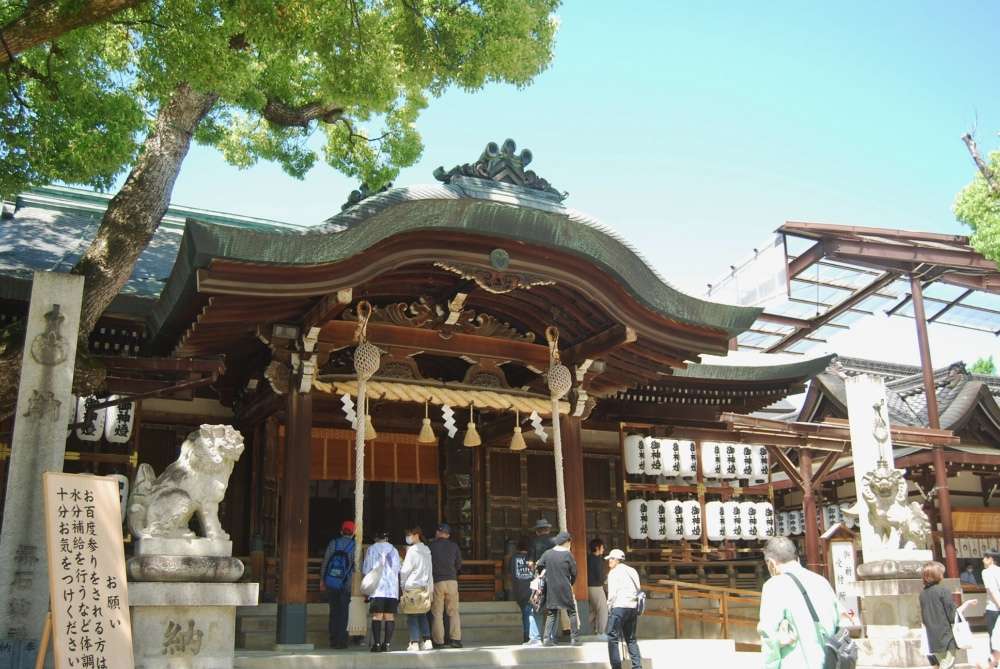
Main Hall of Ishikiri Shrine – Photo by the author
The origins of Ishikiri Shrine are ancient and not clearly documented. However, legend traces its founding back to the 3rd century during the reign of Emperor Sujin.
The shrine enshrines two deities: Nigihayahi no Mikoto, grandson of the sun goddess Amaterasu, and his son Umashimade no Mikoto. Nigihayahi is said to be the elder brother of Ninigi no Mikoto, the central figure in Japan’s heavenly descent myth.
The word Tsurugiya (sword and arrow) in the shrine’s name symbolizes divine power — the kind that can cut through even the hardest rock. This gave rise to the belief that the shrine’s deity could “cut through” tumors, healing the afflicted.
In fact, denbo (tumor or swelling) is a dialect word in the Kansai region, showing how deeply this faith is connected to local life and language.
As time passed, the focus shifted from treating swellings to broader prayers for recovery from cancer and other life-threatening diseases. Today, Ishikiri Shrine attracts thousands of visitors from across the country.
The shrine is currently operated by Shintō Ishikiri-kyō, an independent religious organization that separated from the main Shinto Association in the Showa era. However, it has long been maintained by the Kizumi family, descendants of the ancient Mononobe clan, and should not be confused with a new religious sect.
Hyakudo Mairi: A Devotion Unique to Ishikiri Shrine
In many Shinto shrines, you may see hyakudo ishi — stones used for a practice called Hyakudo Mairi, or the “100-time prayer walk.” But spotting someone actually performing this is rare.
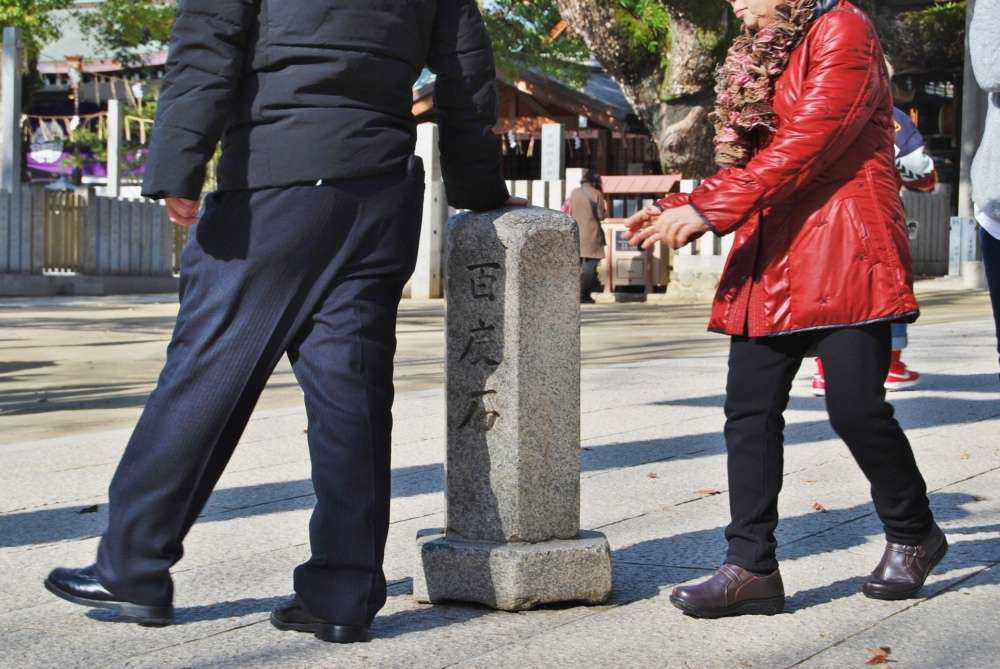
Hyakudo Mairi – Photo by the author
At Ishikiri Shrine, however, this practice is a daily occurrence. Regardless of the season, people can be seen walking back and forth between the prayer stones with quiet determination, often holding a cord used to count repetitions.
The heartfelt prayers of those facing illness are expressed in this moving ritual.
The Sub-Shrines of Ishikiri Shrine
Within the shrine grounds, many smaller shrines offer blessings for different needs.
After passing through the third torii gate in front of the main hall, you’ll find on either side:
・Jinmu Shrine, dedicated to victory and courage
・Gosha Myojin, for business success and bountiful harvests
・Suijin Shrine, for safe childbirth and child-rearing
Behind the main hall are even more sub-shrines:
・Hozumi Shinrei-sha, for protection against illness and academic success
・Ichigan Seirei-son, believed to grant a once-in-a-lifetime wish
・Inui Shrine, ideal for prayers to improve personal virtue
The Ema Hall: A Grand Structure You Shouldn’t Miss
Ishikiri Station on the Kintetsu Nara Line lies on the hillside of Mount Ikoma. From there, the path to the shrine leads downhill through the bustling shopping street. Visitors entering from this route will first pass through the third torii gate.
However, the formal front approach is located south of the third torii. Walking along this main path, you’ll pass through the first and second torii gates and arrive at a large, striking building just before the third gate.
This is the Ema-den, or Votive Tablet Hall.
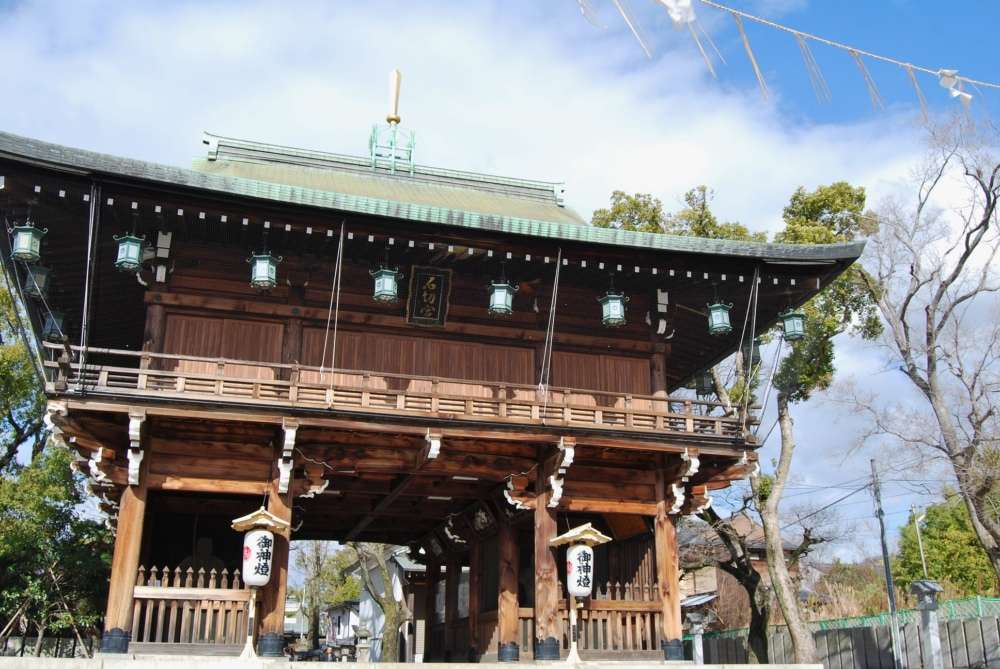
Ema Hall of Ishikiri Shrine – Photo by the author
The Ema Hall is a massive four-legged wooden gate, with warrior statues holding swords on either side. Its copper roof has aged to a blue-green patina, and golden swords and arrows rise from its peak, pointing toward the heavens.
In contrast to the shrine’s otherwise humble appearance, this structure exudes spiritual strength and solemnity. Even if you entered through the shopping street, it’s worth stopping here before heading home.
The Unique Ishikiri Shopping Street
The Ishikiri Shopping Street is a gently sloping path that leads from Ishikiri Station to the shrine.
Though narrow, it is lined with vibrant shops — including food vendors, souvenir stalls, clothing stores, and household goods. The atmosphere is lively and nostalgic.
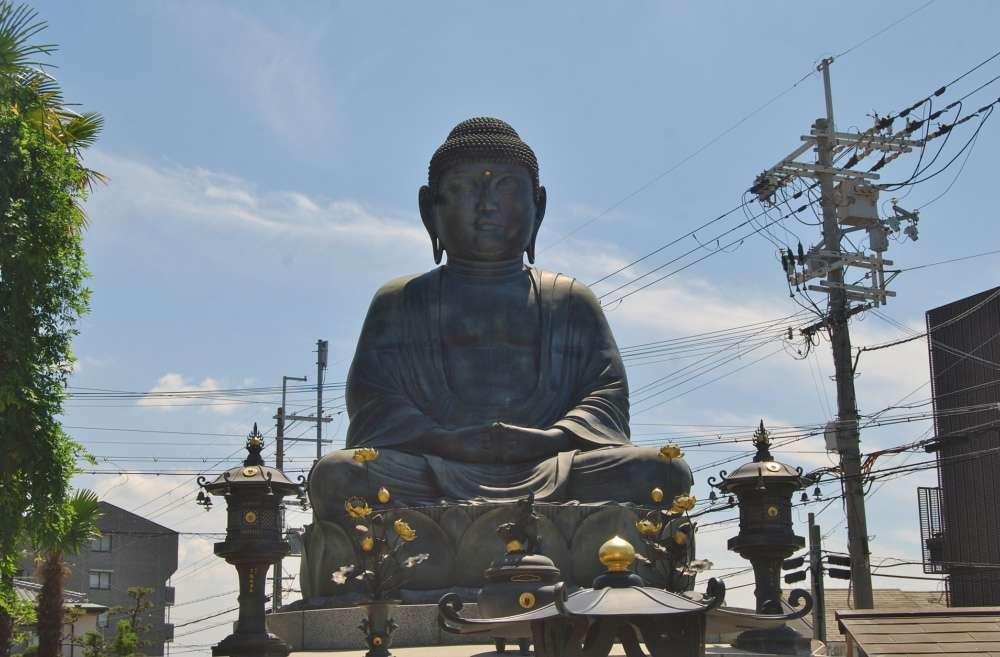
Ishikiri Daibutsu – Photo by the author
What sets this street apart from other temple approaches is its distinct spiritual feel. You’ll find not only the recently constructed Ishikiri Daibutsu (Great Buddha), but also scattered small altars to various deities and a large number of fortune-telling shops.
Together, these elements create a unique, mysterious energy not found elsewhere.
This street has been featured on local Kansai TV shows and remains a beloved destination for spiritual and casual visitors alike.
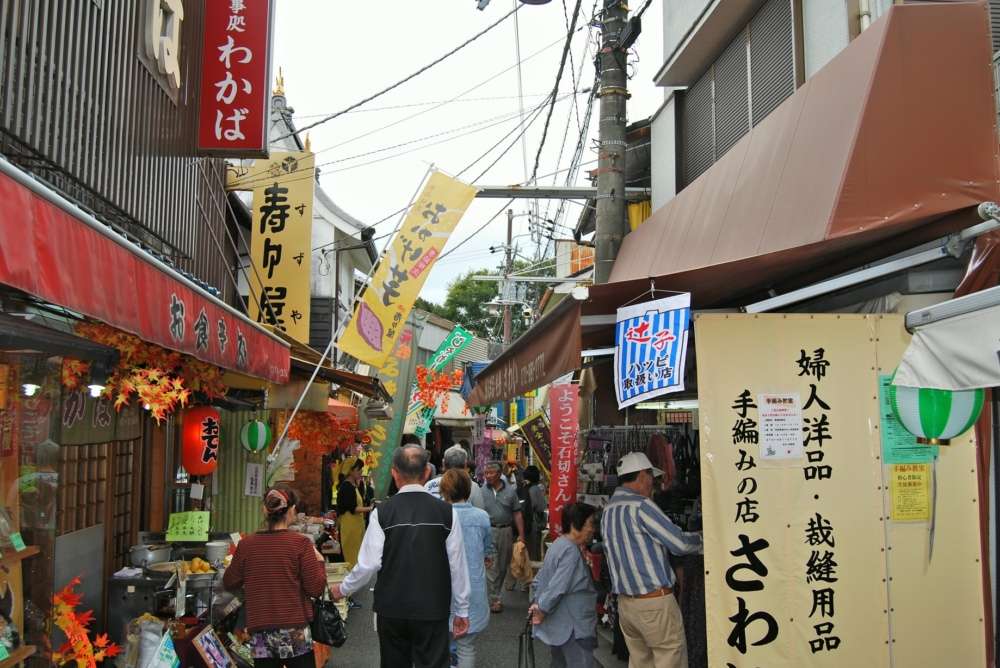
Ishikiri Shopping Street – Photo by the author
Though some fortune-telling shops existed before, their numbers grew after several key events — including Japan’s economic downturn in the 1990s and the opening of the nearby Shin-Ishikiri Station, which shifted visitor patterns.
The shrine’s growing fame as a “cancer-healing” site also fueled the trend. Today, fortune-telling has become part of the street’s charm.
The Ishikiri Daibutsu was built in 1980 by Sakamoto Masaatsu, the fourth-generation head of a local herbal medicine company. It stands 6 meters tall (8 meters including its base).
You’ll also find a statue of the fearsome Ishikiri Fudo Myo-o along the path to the shrine.
Conclusion
Ishikiri Shrine has adapted to changing times while remaining a place where faith and daily life intertwine.
Whether stopping to browse the shops or listening to a fortune-teller, it’s a space where spiritual prayer and everyday culture coexist seamlessly.
Quiet and unassuming at first glance, Ishikiri Shrine and its approach offer a unique and lingering charm.
References:
Official Website of Ishikiri Tsurugiya Shrine


